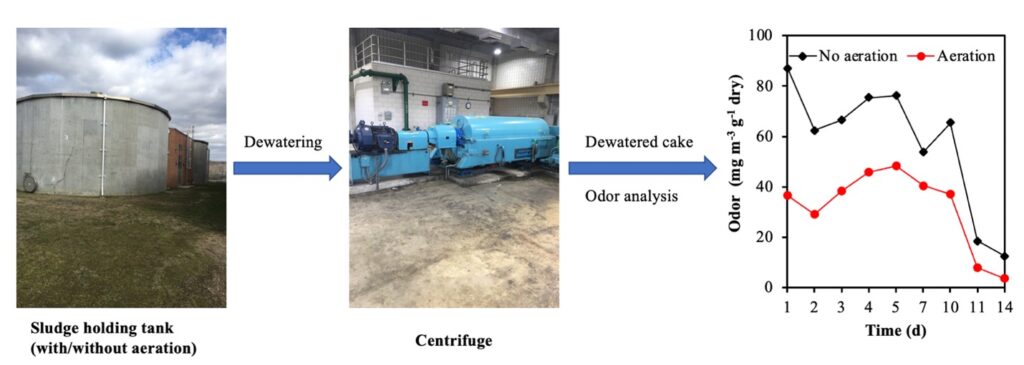5/7/2021 Congratulation to Hao for his new publication in WER!


Aeration in sludge holding tanks as an economical means for biosolids odor control – A case study
https://doi.org/10.1002/wer.1582
Abstract: Abnormally high odor detection threshold (DT) values were detected for biosolids produced at one of the Water Resource Recovery Facilities (WRRFs) of Washington Suburban Sanitary Commission. As an inexpensive countermeasure, aeration of thickened sludge holding tanks (SHTs) was tested as a solution for mitigating the subsequent biosolids odor emission. Experimental results indicated that the extremely low oxidation reduction potential (ORP) in the SHTs and the fermentation of high-rate activated sludge were primarily contributors to the odor emission from the dewatered cake. Two rounds of bench-scale experiments on different days confirmed that aerating the sludge in holding tanks reduced peak emission concentrations of sulfurous odorous compounds such as hydrogen sulfide (H2S), methanethiol (MT), and dimethyl sulfide (DMS) from 203, 110, and 20 mg m-3 g-1 dry to 119, 70, and 14 mg m-3 g-1 dry, respectively. Further preliminary full-scale validation study showed that even a slight ORP improvement from -180 mV to -162 mV reduced the peak H2S concentration from 87 to 48 mg m-3 g-1 dry and decreased the biosolids DT value from 4266 to 1862. It was concluded that lifting ORP in SHTs through aeration can be used by utilities as a simple means for biosolids odor control.




